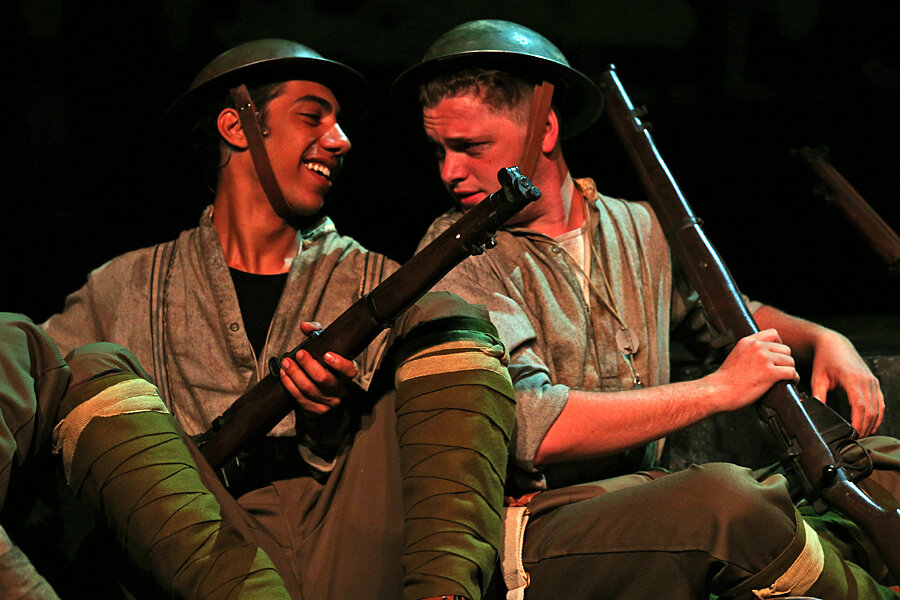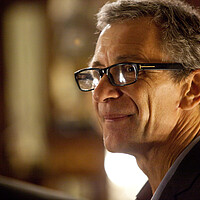History textbooks in crosshairs of Australia's curriculum wars
Loading...
| Sydney, Australia
In the annals of European military history, the battle for Turkey’s Gallipoli Peninsular, which began April 25, 1915, is only a footnote. But for generations of Australians it forged a national identity of endurance, bravery, and mateship – a uniquely Australian brand of solidarity. Over 8,000 Australian soldiers died in Gallipoli, making it the country’s worst military defeat.
The date is marked in Australia and New Zealand as ANZAC Day, a national holiday, and both countries are gearing up for a major celebration of next year’s centenary.
Now the teaching of Gallipoli in Australian schools has become one of the central skirmishes in so-called “curriculum wars” that pit a conservative government against educators and their textbooks in a young, multi-ethnic country with a complex and contested history. Some blame Australia’s middling scores in international science and math tests on a requirement to incorporate cross-curriculum themes, such as environmentalism.
Education Minister Christopher Pyne has complained that new textbooks gave equal weight to ANZAC Day as Ramadan and Buddha’s birthday. He singled out Australia’s history curriculum for “not recognizing the legacy of Western civilization and not giving important events in Australia's history and culture the prominence they deserve, such as ANZAC Day.”
In January Mr. Pyne, who became education minister last September, appointed a conservative-leaning panel to review a newly introduced national curriculum to ensure that it’s unbiased and tackles “real-world issues.” The panel is due to report to the government by July 31.
As in many countries, what history is taught, and not taught, speaks to a nation’s sense of identity. For Australians, the question is which nation they are studying: a territory invaded in 1788 by white colonialists who clashed violently with indigenous Aborigines or a land that was settled peacefully and where conflict with the inhabitants wasn’t the result of a deliberate eradication policy. Today Aborigines make up less than 3 percent of Australia’s population of 23 million.
Mr Pyne’s review has alarmed educators who want the curriculum to reflect Australia’s 50,000 year-old indigenous culture, its ties with its Asian neighbors, and the importance of environmental sustainability. The opposite camp argues that pandering to such progressive causes distracts teachers from core subjects such as math and English.
Curriculum rollout
The review took teachers by surprise, coming after all states and territories completed the rollout of the national curriculum, which began in 2010 under former Prime Minister Julia Gillard.
Perhaps the most contentious aspect of the national curriculum is the requirement that every subject must be interpreted through a prism involving three cross-curriculum priorities: Aboriginal and Torres Strait Islander histories and cultures; Asia and Australia’s engagement with the region; and sustainability. This goes beyond social sciences: high school math teachers are asked to consider the “cultures and histories” of indigenous people and the Asian region.
Kevin Donnelly, a former teacher and political consultant who co-chairs the review board, has taken issue with such guidelines. “The pendulum has moved too far towards that kind of approach and we really need to balance that with an understanding that our political, our legal institutions are derived from Western civilization,” he told a recent public forum.
Kathe Kirby, the executive director of the Melbourne-based Asia Education Foundation, rejects that charge. “The majority of the curriculum is still too Eurocentric. Children aren’t exiting the school system with a fundamental knowledge of the Asian region,” she says.
As for the cross-curriculum priorities, she says they will help students understand the forces that will shape their future. “By the time a child starting school this year enters the workforce, China and India will be the world’s largest economies,” she says.
Healthy eating
The view from the classroom is more practical. Ten-year-old Marlo McClintock, who attends a private girls college in Sydney, says she wants more history and science.
“We study Mandarin (Chinese), but I would like to know more about Chinese and Japanese culture, and about Mongolia and other Asian countries,” says Marlo, who is in fifth grade. “We need to do more cultural studies and learn about medicine and health in general and about how to eat healthily.”
Not all educators are convinced that the key to better outcomes in the classroom lies in endlessly fine-tuning the curriculum. Peter Holbrook, a professor of Shakespeare and English renaissance literature at the University of Queensland, believes the answer is quite simple – require teachers to hold bachelor degrees and complete teacher training, which can be done in schools.
“Those teachers often have the depth of expertise which they can take into the schools. And that’s what we want — teachers who are experts, who love their disciplines and who identify with their disciplines,” he says.








